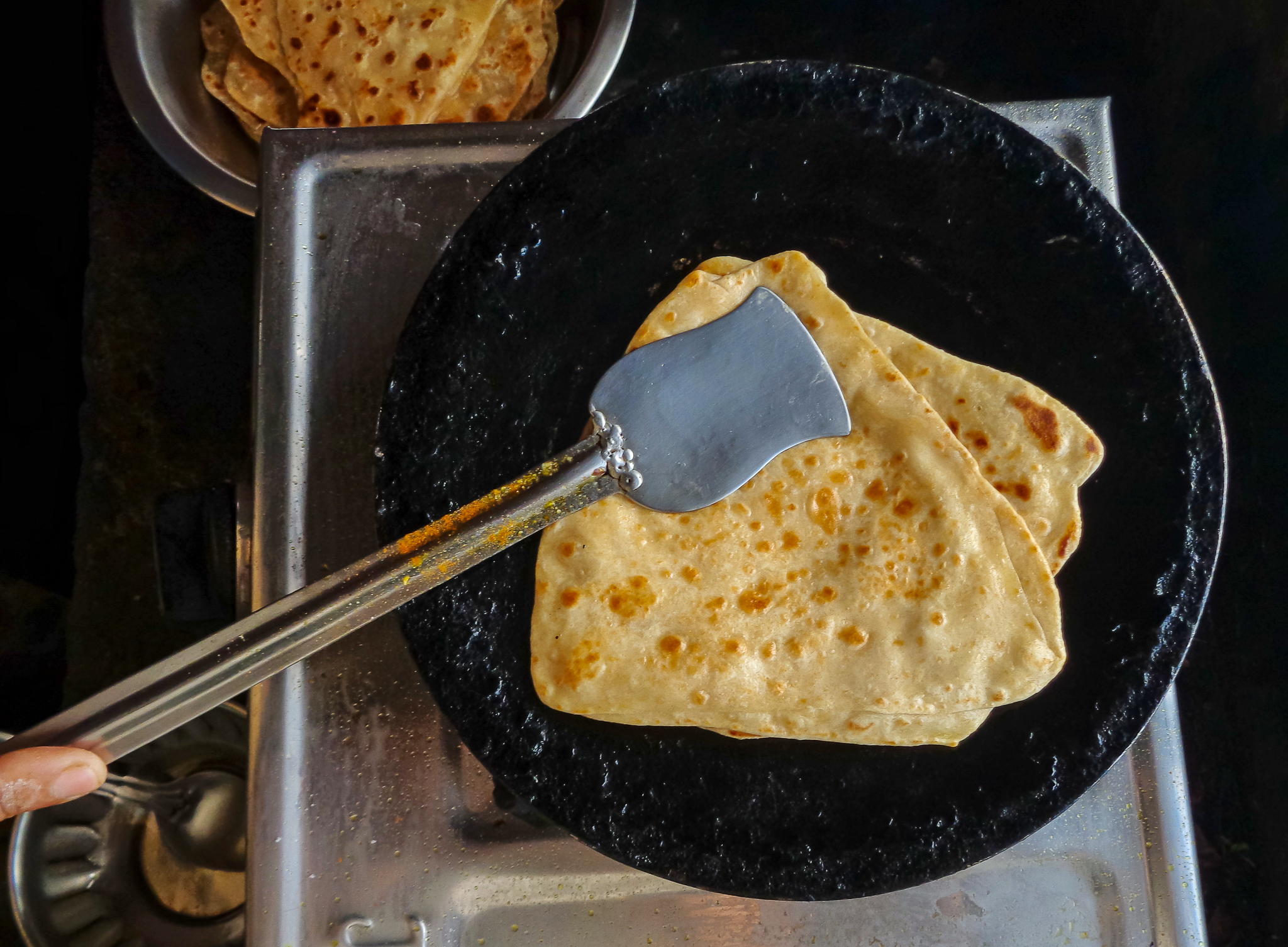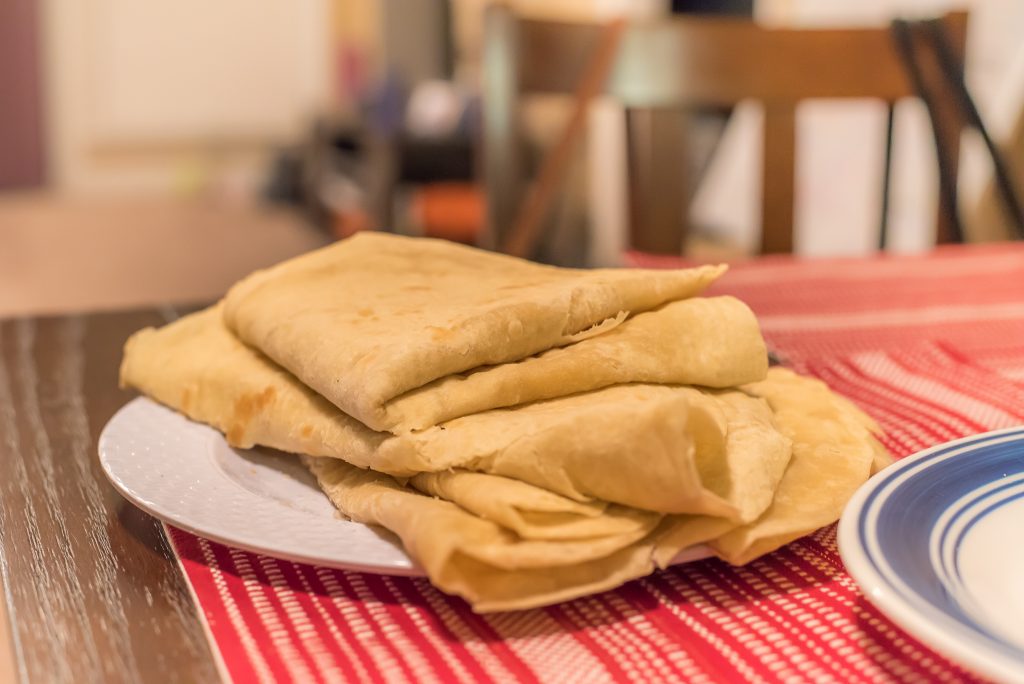
Tawa | Traditional Indian Kitchen Tools
You’d be hard pressed to find a single Trinbagonian kitchen that did not possess a Tawa. From the Hindustani word meaning “iron plate”, Tawas are flat, circular griddles made of metal that are used for cooking flat breads like the various types of roti and roast-bakes.
The first tawas in Trinidad and Tobago were used in earthen fireplaces called chulhas that would crumble each rainfall and need regular leepaying (plastering) with fresh clay. The tawa would sit atop a well stoked fire and dough flattened with a baelna (rolling pin) would be placed on top of it to cook. When it was time to flip the dough a simtah, or tong-like utensil, would be used, although the most skilful roti-makers would use swift and nimble hands and never be burned! However, the hallmark of a true tawa-master is in their ability to sakay—the tawa is pulled slightly off the fire and the partially cooked dough is made to face the direct flames! This makes the dough swell and some even let it get a nice toasting. Today little of these techniques has changed.
The tawa arrived on Caribbean shores through East-Indian indentureship. For some time it was unclear if the East-Indians brought already forged tawas or wrought new ones on local soil so they could delight in traditional meals from their homeland. However, some historical accounts tell of the tawa being used at sea to cook on the boats that brought the indentured Indians. One thing is for sure though, the indentured servants who came here would have encountered a version of the tawa already on the islands! The baking stone or plattin was made of stone and used by the Afro-Trinidadians for making cassava bread. After the tawa was introduced some people continued to call it a baking stone.

Whatever you choose to call it, this ingenious utensil has undoubtedly been cemented in local culture – from everyday mealtime to fancy weddings, from Muslim Hakikas to Hindu Ramayan Jhags. Due to travel and trade with India you can even find tawas in places that might surprise you like Romania, Croatia and Bosnia. Though ancient the tawa is yet to be outmoded and remains a gateway to a world of rotis like luxurious dhalpourri, essential saada, coveted bus-up-shut and exceptional dhosti, not to mention the accompanying saucy talkaris, chokas, buljols and curries.
